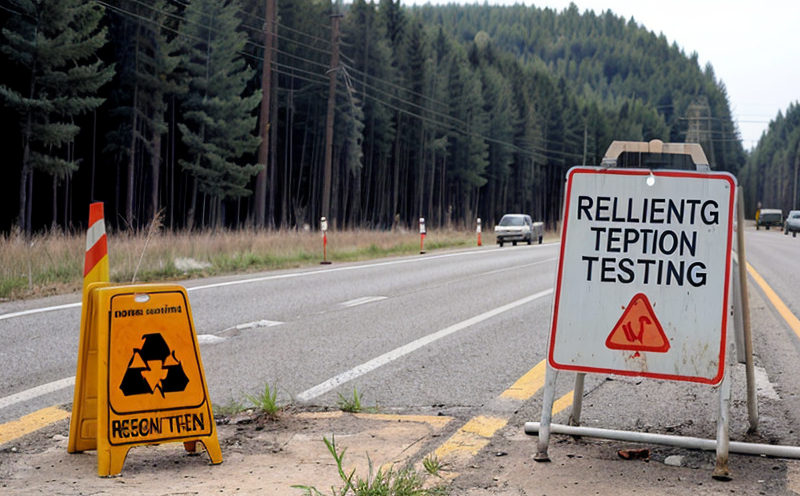ASTM D7294 Monitoring of Radioactive Fallout in the Environment
The ASTM D7294 standard provides a comprehensive framework for monitoring radioactive fallout in the environment. This is critical for ensuring public safety, especially after incidents such as nuclear accidents or testing. The standard outlines procedures to collect and analyze samples from various environmental media including soil, water, vegetation, and air, focusing on radionuclides like cesium-137 (Cs-137) and iodine-131 (I-131).
The testing process involves the collection of representative samples which are then analyzed using gamma spectroscopy. The methodology ensures that any radioactive contamination is accurately quantified, allowing for effective mitigation strategies to be implemented.
Our laboratory adheres strictly to ASTM D7294 guidelines ensuring accurate and reliable results. Our team of experts uses state-of-the-art equipment to ensure precision in sample collection and analysis. This includes portable gamma spectrometers capable of real-time measurements as well as static instruments for more detailed analysis back at the lab.
The importance of this testing cannot be overstated, particularly following significant events like the Fukushima disaster or Chernobyl incident where radioactive fallout posed severe health risks to populations in affected areas. By providing timely and accurate data on levels of contamination, we help ensure appropriate responses are taken by authorities.
Our approach goes beyond mere compliance; it aims at preventing further spread of radioactivity through precise monitoring techniques. This is achieved not only by adhering strictly to standards but also by leveraging advanced technology that allows us to detect even trace amounts of radioactive materials.
For instance, we utilize high-purity germanium detectors which offer superior sensitivity compared to conventional scintillation detectors used in many other laboratories. These detectors can identify specific isotopes with great accuracy, making them invaluable tools for this type of work.
We pride ourselves on our ability to provide not just results but also actionable insights based on those findings. Our reports include detailed information about the nature and extent of contamination found during each test, along with recommendations for remediation if necessary. This proactive approach ensures that any issues are addressed promptly before they escalate into larger problems.
Our service extends beyond mere compliance; we aim to contribute positively towards ensuring public safety by providing reliable data on environmental radiation levels. Through rigorous adherence to ASTM D7294 standards and the use of cutting-edge technology, we strive to be at the forefront of this important field.
Applied Standards
The ASTM D7294 standard specifies procedures for determining the concentration of radioactive fallout in soil, water, vegetation, and air. It covers sampling techniques, analytical methods, quality assurance practices, and reporting requirements designed to ensure accurate measurement.
- Sampling Techniques: The procedure involves collecting samples from different locations within a defined area, ensuring representativeness.
- Analytical Methods: Gamma spectroscopy is used for quantifying radionuclides in the collected samples.
- Quality Assurance Practices: This includes calibration checks and proficiency testing to maintain consistency across tests.
- Reporting Requirements: Results must be reported according to specified formats including sample location, date of collection, type of media, detected radionuclides, their concentrations, etc.
Scope and Methodology
| Sample Media | Analytical Technique | Data Reporting |
|---|---|---|
| Soil | Gamma Spectroscopy | Concentration of Cs-137 and I-131 |
| Water | Gamma Spectroscopy | Concentration of Cs-137, I-131, and other radionuclides |
| Vegetation | Gamma Spectroscopy | Concentration of Cs-137, I-131, and other radionuclides |
| Air | Portable Gamma Spectrometry | Real-time concentration readings of specific isotopes |
The ASTM D7294 standard provides a detailed methodology for monitoring radioactive fallout in the environment. This includes procedures for sample collection, preparation, and analysis using gamma spectroscopy.
- Sample Collection: Samples are collected from various locations within defined areas to ensure they are representative of the overall environment being monitored.
- Spectroscopic Analysis: Gamma spectrometers are used to measure the energy and intensity of gamma rays emitted by radioactive isotopes in the samples. This allows for accurate quantification of radionuclides present.
The data obtained from these analyses is then reported according to specified formats, including information about the sample location, date of collection, type of media sampled, detected radionuclides and their concentrations.
Competitive Advantage and Market Impact
- Tailored Solutions: We offer customized monitoring programs tailored to specific client needs, ensuring that we meet individual requirements effectively.
- Predictive Insights: By providing real-time data on environmental radiation levels, we enable clients to make informed decisions regarding potential risks and necessary actions.
Our service has a significant impact on the market by contributing to improved public health outcomes. Through accurate and timely monitoring of radioactive fallout in the environment, we assist authorities in implementing effective mitigation measures that protect communities from harm caused by radiation exposure.





